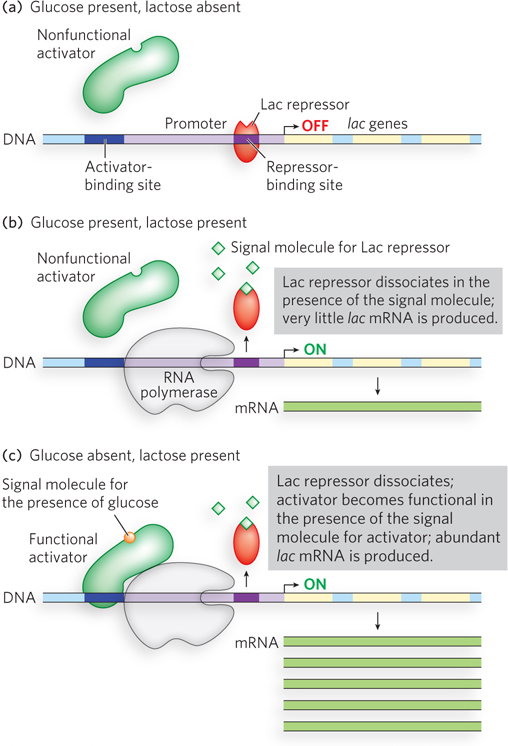
Signal integration in gene expression. An activator and a repressor integrate two different environmental signals (the presence of glucose and of lactose) to control gene expression in the lactose- h-